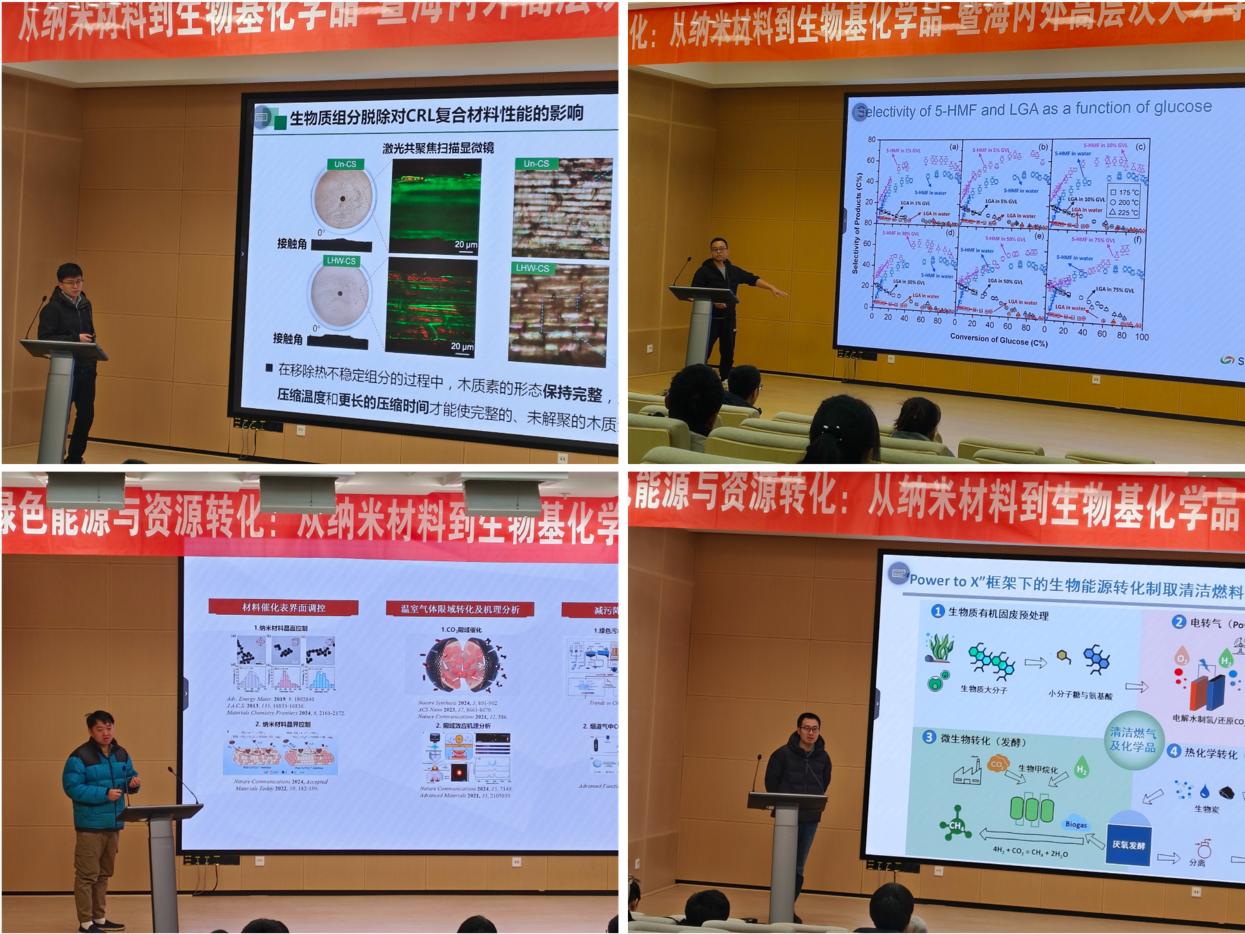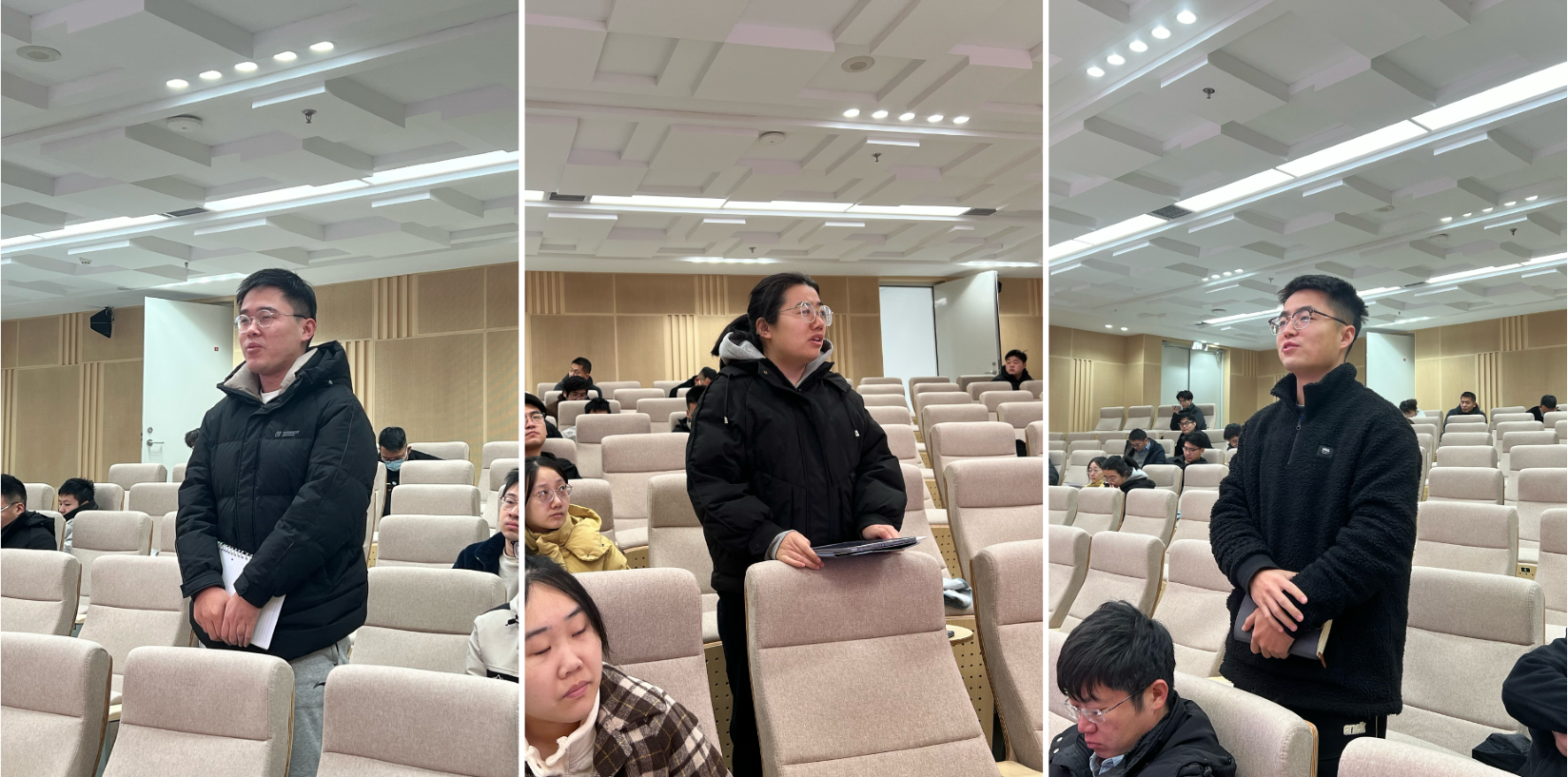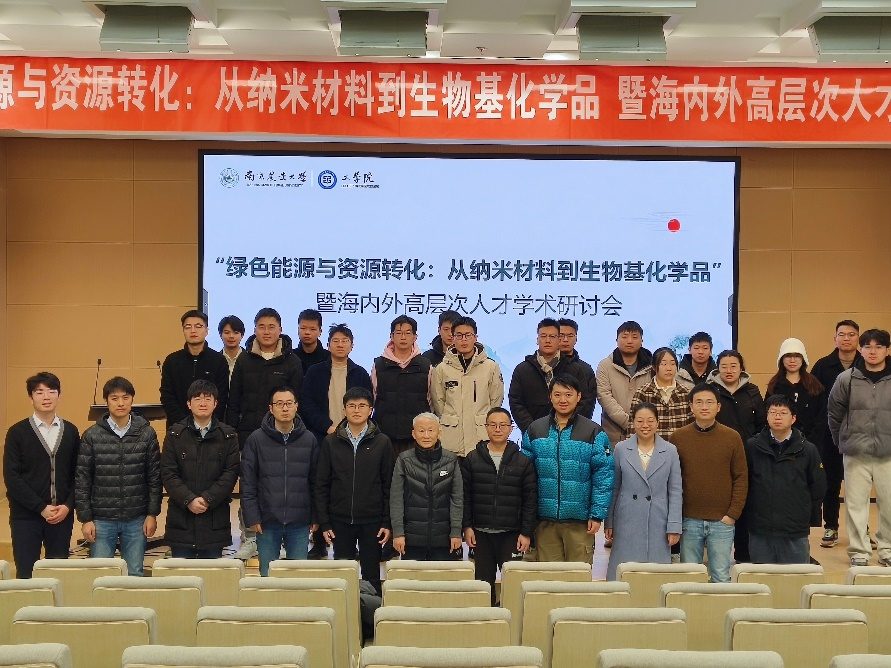绿色能源研讨会Green Energy and Resource Transformation: from Nanomaterials to Bio-based Chemicals”:Int’l Sym. of High-level Talents was Successfully Held
31 12 月, 2024Green Energy and Resource Transformation: from Nanomaterials to Bio-based Chemicals”:Int’l Sym. of High-level Talents was Successfully Held
On the morning of December 25, 2024, the “Green Energy and Resource Transformation: from Nanomaterials to Bio-based Chemicals”: International Symposium of High-level Talents was successfully held by the College of Engineering, Nanjing Agricultural University. At the invitation of Dr. Shuai Gao and Prof. Zhen Fang of the Biomass Group, Prof. Li Shuai from Fujian Agriculture and Forestry University, Senior Researcher Bing Song from the New Zealand Forest Research Institute (SCION), Prof. Richen Lin from the School of Energy and Environment, Southeast University, and Prof. Wenlei Zhu from the School of Environmental Science and Engineering, Nanjing University, attended the meeting and delivered presentations.
Prof. Shuai introduced his research on the reorganization of lignocellulosic biomass for the preparation of plastic-like materials. He elaborated on the chemical composition of lignin, cellulose, and hemicellulose, as well as their roles in biomass transformation processes. He shared his team’s research findings on the direct conversion of lignocellulosic biomass into plastic-like materials, including the preparation process and performance optimization of cellulose-reinforced lignin composites (CRL).

Dr. Song provided a detailed introduction to the application of γ-valerolactone (GVL) as a solvent, especially its various roles in biomass decomposition. Additionally, Dr. Song discussed the impact of GVL on the primary reactions of glucose. Through a series of experiments, he demonstrated how GVL can improve the efficiency of biomass decomposition and discussed the selectivity of GVL in the biomass conversion process.
Prof. Zhu shared his research achievements in the field of precise control of nanomaterials for electrocatalytic reduction of CO2. He detailed how the morphology and structure of nanomaterials can be regulated to enhance the selectivity and efficiency of the CO2 reduction reaction and explored the nanoconfinement coupling mechanism. Among his introductions, Prof. Zhu presented a self-developed self-pressurized nano-catalyst capsule that efficiently achieved CO2 reduction, which broadened the students’ horizons.
Prof Lin introduced the technology of bioenergy conversion driven by green electricity, including hydrogen production through electrolysis, CO2 conversion and utilization, and the high-value conversion of biomass. He emphasized the key role of biomass energy conversion in achieving carbon neutrality goals and shared the latest research progress in the design and optimization of bioenergy systems.

This event primarily focused on academic discussions and sharing around “Green Energy and Resource Transformation.” The activity enhanced academic exchanges and cooperation between Nanjing Agricultural University and domestic and international universities and research institutions. It also contributed the students’ understanding and knowledge of the forefront of biomass energy conversion, well inherited the spirit of scientific research, and promoted innovative thinking in biomass energy conversion technology and materials. Prof Fang of the Biomass Group host the meeting, all the young researchers of the research group attended the meeting.

“绿色能源与资源转化:从纳米材料到生物基化学品”暨海内外高层次人才学术研讨会成功举办
2024年12月25日上午,“绿色能源与资源转化:从纳米材料到生物基化学品”暨海内外高层次人才学术研讨会在南京农业大学工学院A106-108学术报告厅成功举办。应生物能源研究组高帅副教授和方真教授邀请,福建农林大学帅李教授、新西兰林业研究所(SCION)宋兵高级研究员、东南大学能源与环境学院林日琛教授、南京大学环境学院朱文磊教授出席会议并作报告。
福建农林大学的帅李教授向大家介绍了木质生物质重组制备仿塑材料的相关研究,阐述了木质素、纤维素和半纤维素的化学组成及其在生物质转化过程中的作用,分享了自己团队将木质生物质直接转换为可塑性材料的研究成果,包括纤维素增强木质素复合材料(CRL)的制备工艺和性能优化。
新西兰Scion研究所的宋兵高级研究员针对γ-戊内酯(GVL)作为溶剂进行了详细的应用介绍,特别是在生物质分解中的诸多作用,另外宋兵提到了GVL对葡萄糖初级反应的影响。通过一系列实验,宋兵展示了GVL如何提高生物质分解效率,并讨论了GVL在生物质转化过程中的选择性。
南京大学环境学院的朱文磊教授分享了他在纳米材料精确调控用于CO2电催化还原领域的研究成果。他详细介绍了如何通过纳米材料的形貌和结构调控来提高CO2还原反应的选择性和效率,并探讨了纳米限域偶联机制。其中朱文磊教授介绍了一种自研的自增压纳米催化剂胶囊,高效地实现了CO2的还原,让同学们大开眼界。
东南大学能源与环境学院的林日琛教授介绍了绿电驱动的生物能源转化技术,包括电解制氢、CO2转化与利用、以及生物质的高值化转化。他强调了生物质能源转化在实现碳中和目标中的关键作用,并分享了他在生物能源系统设计和优化方面的最新研究进展。
活动围绕“绿色能源与资源转化”进行学术研讨与分享。增进了南京农业大学与国内外高校和科研机构的学术交流与合作,同时增强了同学们对生物质能源转化前沿知识的理解与认识,很好地传承了科研精神,推动了生物质能源转化技术与材料等方面的创新思考。生物能源研究组方真院士主持会议,课题组全体青年教师出席会议。